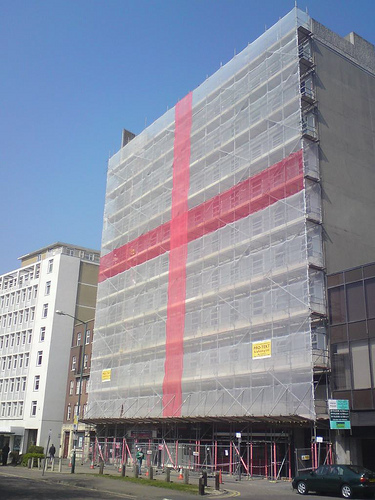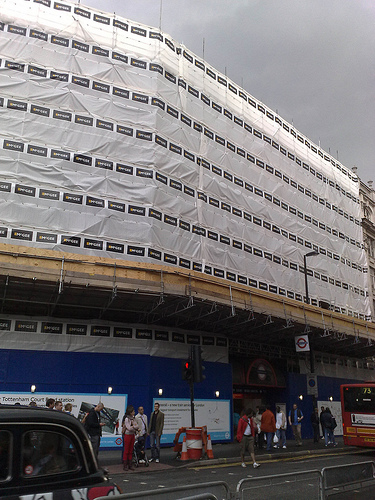A Net For All Reasons – Construction Netting Solutions

Depending on the type of project and area in which it’s being carried out, the way you go about erecting and protecting the outside of a scaffolded building will vary. While open scaffold was once the only real option, these days there are plenty of ways in which the building, workforce and passing public below can be protected as work is carried out on scaffold around a building.
Work on smaller properties will have different requirements to work carried out on large buildings in public areas, and where people are at risk from falling debris there is an absolute requirement for scaffolding and building contractors to protect passers-by and traffic from falling debris.
When operating on a site that has the potential to see falling debris in public areas, it’s necessary to ensure that the whole area around which the work is being carried out is covered with debris netting of sufficient quality to catch the detritus thrown out by building and renovation work. This can often be needed not just when carrying out construction but also during work to renovate and repair buildings through procedures such as re-rendering and sand-blasting or jet cleaning to remove dirt that can degrade the surfaces of the walls.

For those projects where work with volatile materials or hot processes is necessary, erecting scaffold netting that is fire retardant is an absolute must to protect the workforce and the public from flash fires. Many materials used in construction can become flammable when powdered and in the right conditions fires can start easily. These must be contained for the safety of workers and the public.
Netting over scaffolded areas has a number of advantages. In addition to the obvious benefit of containing dust and debris from falling from the scaffold to the areas below, there are other benefits too.
While netting is air permeable allowing ventilation and preventing billowing or drag on high scaffolded structures, the gauge of the mesh is sufficiently small that it greatly reduces the penetration of strong winds and rain. In exposed areas, this makes for a considerably safer and more comfortable working environment for construction personnel during times of inclement weather and allows for work to continue even when the conditions are poor.
Scaffold sheeting such as mono sheeting and Scafflex bring a slightly different set of benefits for the work area. Much less permeable to the elements, sheeting can not only further reduce the amount of dust escaping from the site, it can also form a seal around the scaffold and make for an environment that is almost like working indoors for contractors. Insulated sheeting can further improve the working environment during the hot summer or cold winter months and make a real difference to the site for those involved in the work.

Sheeting can also provide an acoustic shield in noise-sensitive areas and reduce the impact of work with power tools on the occupants of surrounding properties. Acoustic sheeting can also provide an excellent shield against the elements, a flame-retardant cover and provide insulation, making it a great all-round scaffold cover solution. All of these sheeting solutions are available from Laurier and other similar suppliers.
Scaffold sheeting and netting are a vital part of providing a safe, secure and manageable working environment anywhere that scaffold is required for construction and maintenance. In addition to offering protection from the elements and keeping the public safe from falling debris, insulated and acoustic dampening sheeting can improve the workspace for construction personnel and reduce the impact of building works on those in the immediate vicinity to increase public confidence in considerate contracting.
